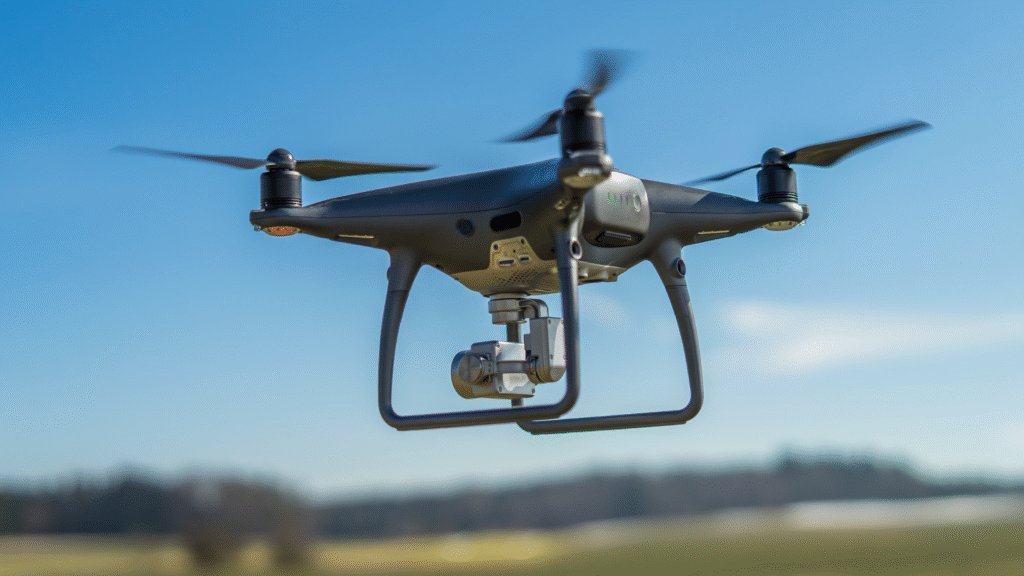

The common yet intrusive sound of flying insects buzzing towards our personal space is what gave drones their name. It is believed that the early stages of radio-controlled aircraft gave birth to a vehicle named ‘Queen Bee’, which was used as target practice for pilots in WWI. It feels quite convenient that, even nowadays, this sound is related to unwelcomed intromissions in the form of wildlife or unmanned aircraft getting too close to one.
However, will this unwanted reputation for drones prevail among future generations? Young audiences are surrounded by multiple forms of advertisement that favour new waves of technology, including gadgets, phones, and, of course, drones. Logic suggests that a middle ground will eventually be found.
It’s fair to say that the drone industry is undergoing a transition from producing harmless RC toys for kids to creating innovative and useful devices. This started after a clear trend in professional photography when aerial shots started to feature more frequently in social networks, publicity campaigns, series, movies, sporting events, etc. Suddenly, it felt like drones had become tools and dropped the toy label.
As they gained popularity, applications of unmanned aircraft started to vary greatly and turned into key components of certain job descriptions. Since drones have become a must-have for tech enthusiasts willing to explore new horizons, there has been extensive support via advertisement. Current technological developments cannot be conceived without the support of bespoke marketing campaigns, which is a logical step for any company that wishes to enter a given market. This has clearly been the case for drones and helps to explain the change in their public perception over recent years.
On the other hand, detractors remain reluctant to embrace drone development in industry. The cliché of elders or old-school citizens who see drones as an inevitable enemy invading their privacy persists, although modern trends regarding the communication of technology have reduced this. Nevertheless, rejections of unmanned aircraft are also giving birth to business opportunities that capitalise on their unfavourable image among certain members of the public. For example, counter-drone technology addresses real threats to protect key infrastructure and does not necessarily share the rejection of technology in the market. On the contrary, most key actors aim to fully unlock the potential of UAV technology.
The absence of universal support for drones is understandable and reflects familiar trends regarding the growth and development of technology. When mobile phones were in their early stages of development, for example, they were mistakenly labelled as the cause of many diseases. Nowadays, however, even the idea of seniors not owning a smartphone is inconceivable. Again, it’s all about communicating what is behind complex technology in simple terms.
A key development in this endeavour is the perception of future generations. Children growing up today see drones as part of their daily lives and not necessarily as toys – much like how they view smartphones. There will inevitably be a recreational component involved, but the use of drones will largely relate to what are perceived as essential activities. Today, it is more common to see drones playing an educational role in cartoons and television programmes compared to the stereotype of them representing a malicious threat. This represents a positive change.
Unmanned aviation is already evolving into another extension of human capacities. Drones are now delivering key medicines in remote locations, assisting rescue missions, and helping navigation in rough conditions, among other uses. If logic prevails, UAVs will soon become yet another part of our daily lives, ensuring future generations view this technology differently. We are currently in the middle of a key transition – and maybe the final evolution – towards their ultimate form as technology that will greatly benefit us all.
It is virtually impossible to imagine a world without drones in the future, much like how a world without smartphones is inconceivable today. As drone technology is still evolving, appropriate guidelines and education must be issued to let everyone know that this technology is here to help us all. We cannot avoid malicious use of UAVs in the near future, but tech firms can always rely on the work we do at Access Partnership to ensure that technology will be available to all in near future by supporting the creation of standards, guidelines, and regulations that protect users, manufacturers, and the general public.
